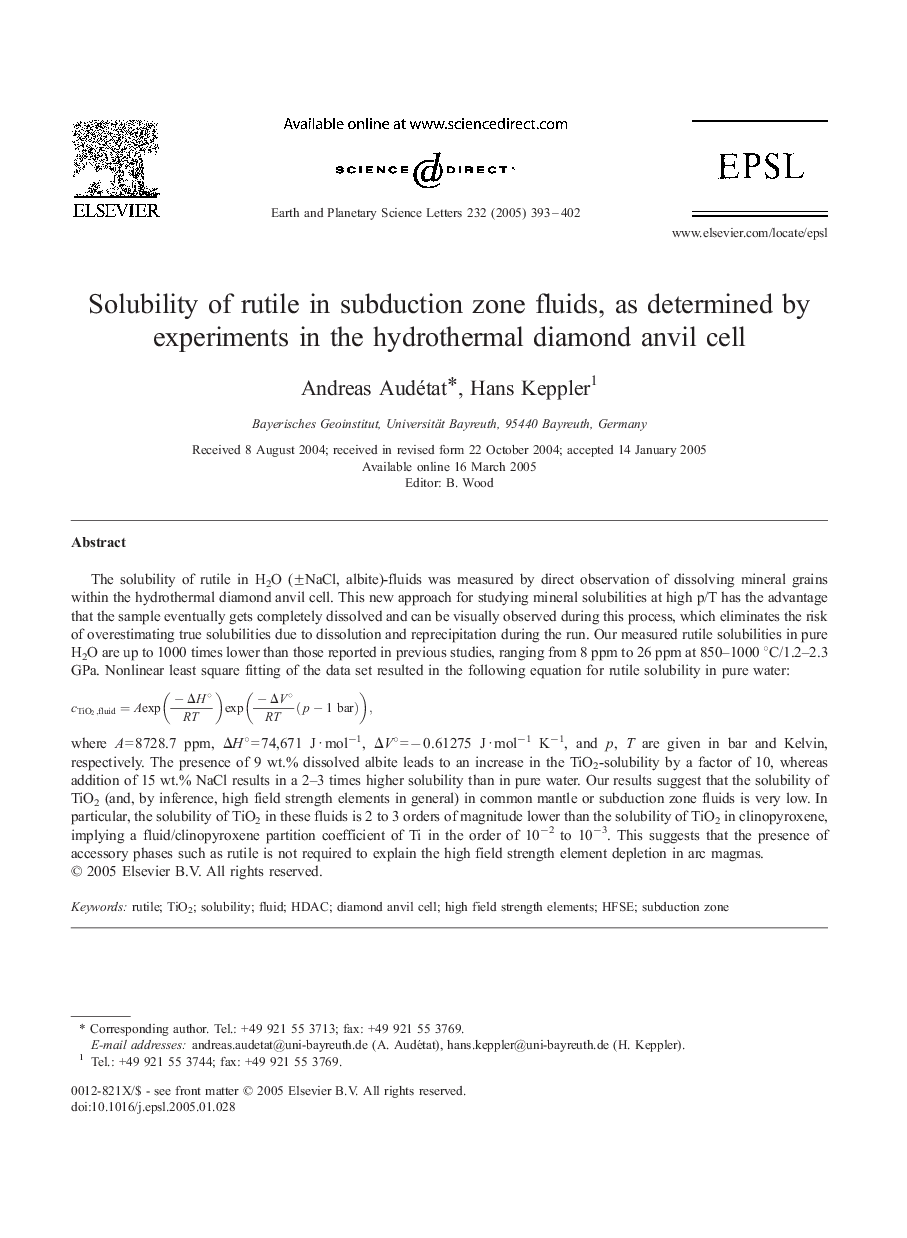| Article ID | Journal | Published Year | Pages | File Type |
|---|---|---|---|---|
| 9522472 | Earth and Planetary Science Letters | 2005 | 10 Pages |
Abstract
The solubility of rutile in H2O (±NaCl, albite)-fluids was measured by direct observation of dissolving mineral grains within the hydrothermal diamond anvil cell. This new approach for studying mineral solubilities at high p/T has the advantage that the sample eventually gets completely dissolved and can be visually observed during this process, which eliminates the risk of overestimating true solubilities due to dissolution and reprecipitation during the run. Our measured rutile solubilities in pure H2O are up to 1000 times lower than those reported in previous studies, ranging from 8 ppm to 26 ppm at 850-1000 °C/1.2-2.3 GPa. Nonlinear least square fitting of the data set resulted in the following equation for rutile solubility in pure water:cTiO2,fluid=A·exp(âÎâ¢H°Râ¢T)·exp(âÎâ¢V°Râ¢T·(pâ1bar)),where A = 8728.7 ppm, ÎH° = 74,671 J·molâ1, ÎV° = â 0.61275 J·molâ1 Kâ1, and p, T are given in bar and Kelvin, respectively. The presence of 9 wt.% dissolved albite leads to an increase in the TiO2-solubility by a factor of 10, whereas addition of 15 wt.% NaCl results in a 2-3 times higher solubility than in pure water. Our results suggest that the solubility of TiO2 (and, by inference, high field strength elements in general) in common mantle or subduction zone fluids is very low. In particular, the solubility of TiO2 in these fluids is 2 to 3 orders of magnitude lower than the solubility of TiO2 in clinopyroxene, implying a fluid/clinopyroxene partition coefficient of Ti in the order of 10â2 to 10â3. This suggests that the presence of accessory phases such as rutile is not required to explain the high field strength element depletion in arc magmas.
Keywords
Related Topics
Physical Sciences and Engineering
Earth and Planetary Sciences
Earth and Planetary Sciences (General)
Authors
Andreas Audétat, Hans Keppler,
